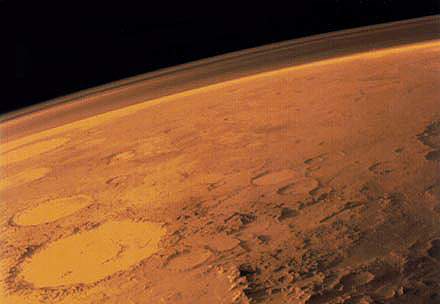Curiosity took a break from its usual rock sampling activities and instead focused on the air, trying to figure out how Mars lost the biggest part of its atmosphere, leaving it with 100 times less than what Earth has.
Researchers believe in the distant past, Mars was a pretty different sight from what we see today, with a thick, rich atmosphere and permanent water. They’re not just throwing away a hunch on this, there’s a big chunk of evidence which points towards a wet past for Mars, but this changed a long time ago: the drought probably started some 600 million years ago.
The rover inhaled the Martian air, analyzing samples taken in the Gale crater, where Curiosity is hanging around these days. Its Sample Analysis at Mars (SAM) instruments suggest that Mars suggests that Mars lost its atmosphere through a process which favored only the retention of the heavier isotopes, with the lighter ones simply drifting off to outer space. The initial results show that the heavier isotopes of carbon in atmospheric carbon dioxide have increased by 5 per cent – a rather subtle, but meaningful change; the same thing happened with heavier argon isotopes. This suggests that the top of the atmosphere, devoid of any heavy elements was lost in outer space.
Another highlight for Curiosity’s research is methane; methane is a simple precursor to life, basically you would expect to find it everywhere you’d find living creatures. But the bad thing is, as far as Curiosity can tell, there’s extremely little methane (if any) in the Martian atmosphere.
“Methane is clearly not an abundant gas at the Gale Crater site, if it is there at all. At this point in the mission we’re just excited to be searching for it,” said SAM Tunable Laser Spectrometer lead Chris Webster. “While we determine upper limits on low values, atmospheric variability in the Martian atmosphere could yet hold surprises for us.”
Still, nothing is clear, and SAM will move on to even more interesting things: it will analyze its first solid samples, searching for organic compounds in the rocks and minerals found in Gale Crater.
Source: NASA










